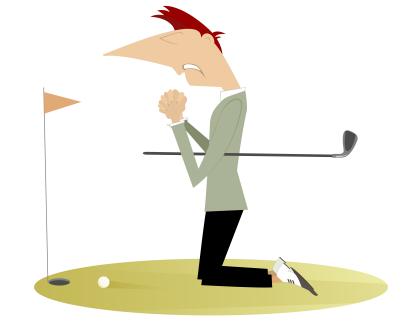Low Net
Your New Year’s golf resolution isn’t going to work, but this will

By now you might be aware that New Year’s resolutions can be a recipe for disappointment. Lapsed gym memberships, diets that don’t stick, clean closets that devolve into chaos by Groundhog Day—break enough resolutions and you start to think you’re either incapable of change, or you just don’t want it enough.
But that's usually not the case. According to one expert, in fact, the most impactful change we can make this year is in how we think about change in the first place.
Lisa Lahey is a Harvard organizational psychologist and author whose research argues New Year’s resolutions are fundamentally flawed. Lahey might not be a golfer, but her change model is still plenty applicable to the game we play.
First, let’s start with Lahey’s main premise, which she lays out in her book Immunity to Change and has discussed recently on Brene Brown’s podcast, “Dare to Lead.” Among the reasons that resolutions don’t stick, Lahey argues, is because the desired change often conflicts with what she describes as a “competing commitment.” Put another way, you might want one thing for yourself—to lose weight, to spend less time on social media—but something else is standing in the way that you’re not even considering. For instance, maybe losing weight is challenged by a frenetic schedule that leaves you grasping at fast food. Maybe you spend too much time on social media because your real social life is problematic.
(Side note: This month, Golf Digest debuted a new program, the 1 Percent Challenge, that focuses not on massive transformations, but small improvements anyone can make.)
Given that, Lahey says, real change begins with a review of your underlying belief system.
“Resistance to change does not reflect opposition, nor is it merely a result of inertia,” wrote Lahey and colleague Robert Kegan in Harvard Business Review. “Instead, even as they hold a sincere commitment to change, many people are unwittingly applying productive energy toward a hidden competing commitment.”
A significant change in Lahey’s view takes place by working through four steps: citing the change you want (“I want a better short game”); noting what’s holding you back (“I don’t have the time to practice”); identifying competing commitments (“I don't want to miss significant time with my family”); and lastly, unearthing “big assumptions” worthy of being challenged (“Twenty minutes of practice time is basically useless").

Or for another golf example, I can use my own story in hopes you might relate. For years I’ve recognized that I could stand to hit the ball further than I do, and have even laid it out as a goal at the start of a golf season. Yet for the most part, my distance off the tee has stayed the same. What’s holding me back? Beyond technical deficiencies and physical limitations, the real reason is I just don’t swing hard enough.
So for me, the first two steps in Lahey’s process are easy: I don’t hit the ball far because I don’t swing hard. Pretty simple. Where it gets interesting is in diving into steps three and four. And in my case, a competing commitment to swinging hard is my desire to play with control, and to not look stupid. I won’t bore you with all the psychological trauma incurred from my earliest days as a golfer, but let’s just say I came to equate a big lash with either sending the ball two fairways over, or driving it three feet into the turf.
All of which contributed to my arrival at a big assumption—that increased swing speed always come at the expense of control, which in turn sets me up to look dumb.
But is that true? That’s a better question for a golf pro than a Harvard professor, but Lahey’s contention is that if we look closely enough at some of our thinking, we’re likely to arrive at holes in our logic.
“Just getting the commitments on the table can have a noticeable effect on the decisions people make and the actions they take,” she writes.
And she’s right. I’ve learned enough about my golf swing in recent years to know there’s a way to swing much harder without sacrificing accuracy. And besides, nothing looks as stupid as someone who’s afraid of looking so.
So that’s just one example, but it underscores the idea that if you really want to address a flaw or improve a behavior, good intentions only go so far. More important is to look at the contributing factors hidden beneath the surface. Lahey doesn’t profess this to be an easy process, but if we’re talking about real transformation, it’s still likely worth it.





